CarEdge saved me over 4,500 dollars on a brand new Honda Pilot. I can't say thank you enough.
Price intelligence
Find a wide range of vehicle listings with market insights on new and used listings near you.


Help us personalize your CarEdge experience — it only takes a second.
Your answers help us personalize your CarEdge journey — we’ll follow up with tips and next steps that match your buying timeline.

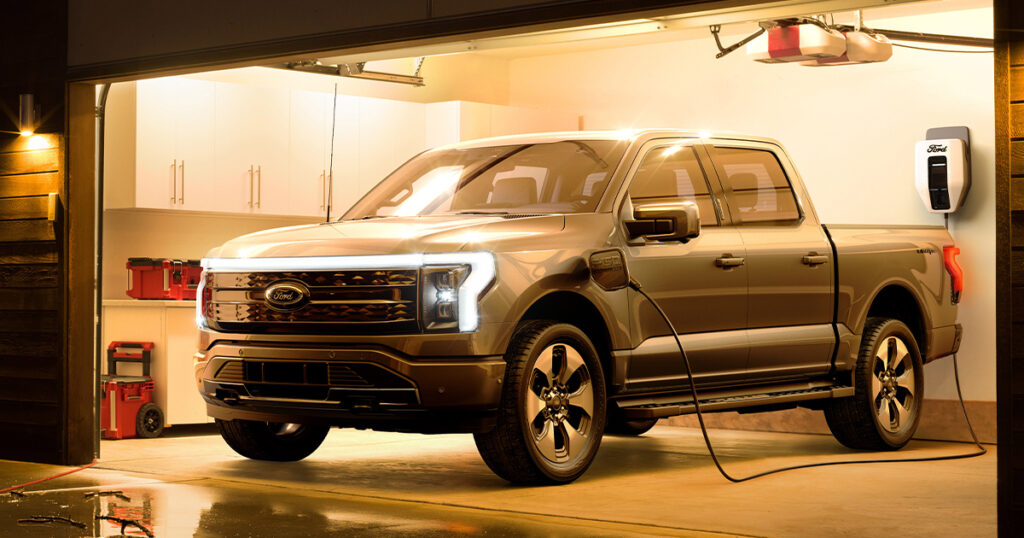
In recent Ford news, the automotive giant has revealed that it expects its electric vehicle business to incur a loss of $3 billion in 2023. This comes despite the company forecasting increased profits from its internal combustion and commercial vehicle operations. Ford’s losses from its EV unit, Model e, are projected to rise by nearly 50 percent this year. Losses are attributed to the company’s investments in expanding production and developing next-generation Ford EVs on a dedicated platform.
Ford announced that it anticipates around $7 billion in earnings before interest and taxes (EBIT) this year for Ford Blue, its internal combustion business unit, and about $6 billion for Ford Pro, its commercial unit. These units generated $6.8 billion and $3.2 billion in 2022, respectively, contributing to the company’s overall adjusted EBIT of $10.4 billion and a net loss of $2 billion.
It has long been assumed by analysts and investors that Ford’s traditional gasoline-powered vehicle business has been the primary driver of profits, helping to fund investments in Ford EVs and other mobility ventures. Thursday marked the first time Ford publicly disclosed the financial results of its three units, which were created in 2022. This new financial reporting method no longer details regional performance, such as North America, Europe, and China.
Ford’s electric vehicles, such as the popular Mustang Mach-E, are currently facing losses, which Lawler explained are to be expected. “Ford Model e is an EV startup within Ford. As everyone knows, EV startups lose money while they invest in capabilities, develop knowledge, build volume and gain share.” The increased losses this year are attributed to investments in building manufacturing complexes in Tennessee and Kentucky, as well as exploring alternative battery chemistries.
Despite these challenges, Lawler assured that Ford would be “approaching contribution margin break even” on EVs by the end of this year. Ford aims to achieve a production capacity of 600,000 EVs annually by the end of 2023. They’re targeting the ability to build 2 million Ford EVs per year by 2026.
In the meantime, the Ford Pro unit expects to nearly double its earnings this year as it prepares to launch a new Super Duty line of pickups and increase output of its E-Transit van. Lawler said, “Ford Blue and Ford Pro are both solidly profitable today and well-positioned for growth.”
Price: $57,896 – $98,869+
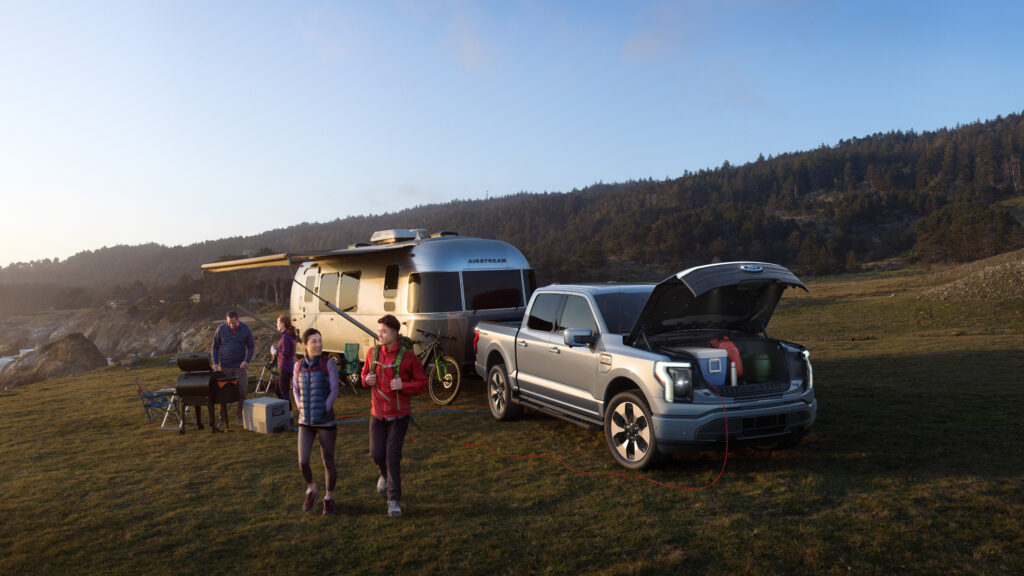
The 2023 Ford F-150 Lightning is an impressive electric pickup truck with a powerful 580 horsepower Extended-Range battery that can hit 60 mph in just 4.0 seconds. With a sleek design that closely resembles its gasoline-powered counterpart, the Lightning offers EPA-estimated driving ranges of 230 to 320 miles, depending on the battery pack. However, towing can significantly impact range and charging frequency. Despite these limitations, the F-150 Lightning remains an ideal choice for truck owners who tow infrequently or for short distances. This year, the Lightning’s price has increased dramatically due to supply-chain constraints, rising material costs, and market demand, with entry-level Pro models seeing a $12,000 hike and higher-end trims experiencing increases between $6,000 and $7,000.
Price: $47,495 – $77,195

The 2023 Ford Mustang Mach-E, priced between $47,495 and $77,195, is a versatile electric crossover offering numerous configurations and equipment packages to suit various preferences. Buyers can choose between the feature-rich Premium model or the high-performance GT. While it may not be a traditional Mustang, the Mach-E boasts impressive agility, speed, and style, as well as a well-equipped interior. Driving range is above average at over 300 miles for some trims. It won Car and Driver’s EV of the Year award in 2021. For the 2023 model year, the Premium trim’s estimated range increases to 290 miles. Ford’s Co-Pilot360 driver-assistance technology now comes standard across the lineup. The new Mustang Nite Pony package is available for selected Premium and GT Performance Edition models.
Price: $43,295+
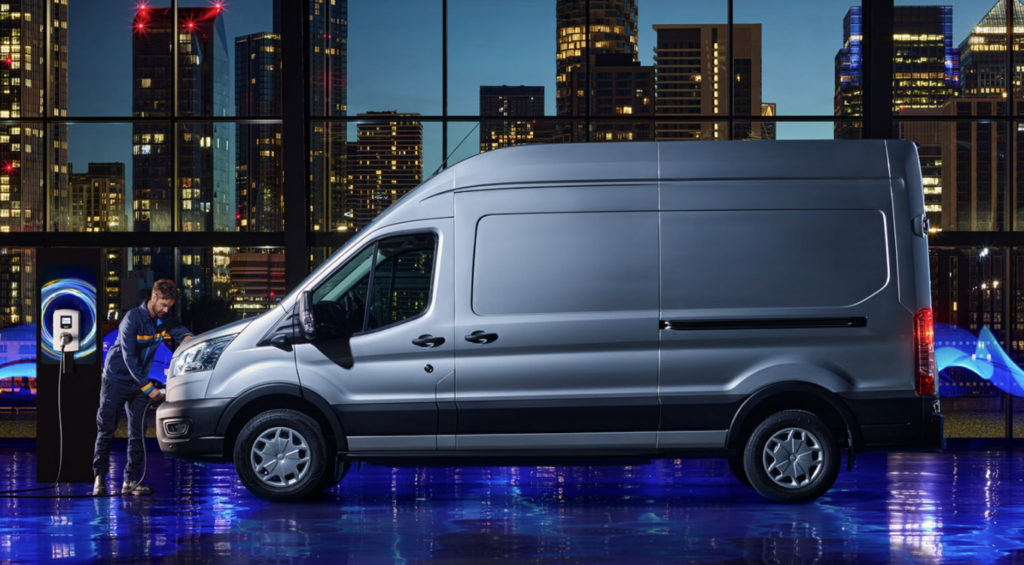
The 2023 Ford E-Transit is an all-electric cargo van designed to enhance productivity for commercial customers. It comes in eight different configurations, including three roof heights and three body lengths, as well as cutaway and chassis cab versions. The E-Transit offers a targeted range of 126 miles for the low-roof cargo van configuration, based on a 68 kWh usable battery capacity. This electric workhorse is part of Ford’s strategy to invest over $30 billion in electrification through 2025. The E-Transit is ideal for fleet operators looking for lower maintenance costs and eco-friendly operations.
Ford expects a $3 billion loss in its electric vehicle business in 2023, despite increased profits from traditional vehicle divisions. These losses are attributed to investments in manufacturing complexes and alternative battery chemistries. Ford remains confident in achieving breakeven contribution margin on EVs by year-end. With a growing EV lineup, Ford aims to enhance productivity for customers while supporting environmentally conscious operations. Despite current challenges, the automaker is investing $30 billion in electrification through 2025.


The latest iSeeCars.com analysis has revealed a significant shift in used car prices in 2023, with prices dropping by 4.7 percent since September and 8.7 percent from a year ago. The study analyzed 1.8 million used car sales between February 2022 and February 2023 to identify used car pricing trends and which models experienced the biggest price increases and decreases. As a company that prioritizes transparency and fairness in the automotive industry, CarEdge is here to help you understand these trends so you can make smarter car buying decisions.
According to iSeeCars’ executive analyst Karl Brauer, the used car market has fragmented over the past year. Although used car prices remain higher than pre-pandemic levels, they have consistently dropped over the past year, with an accelerated decline in the past six months. This fragmentation presents an opportunity for consumers to find better deals on used vehicles as the market adjusts to evolving conditions.
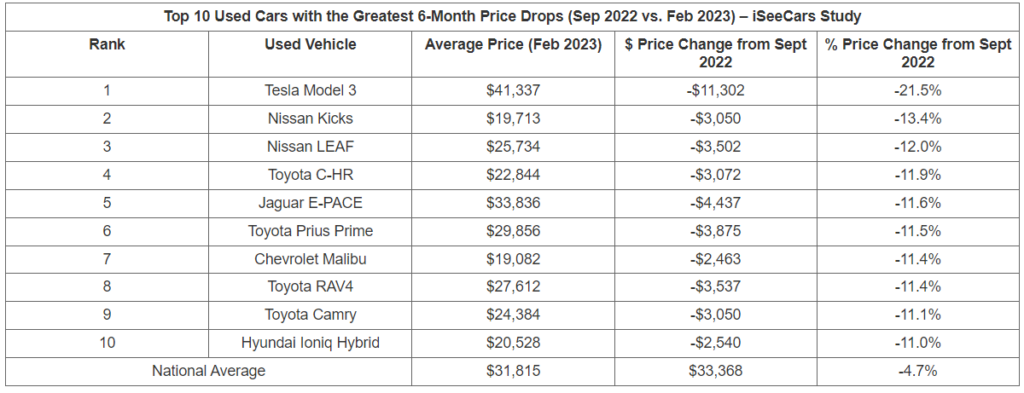
In terms of used car prices, the Tesla Model 3 experienced the most significant drop in the last six months, with a decline of 21.5 percent. Other vehicles like the Nissan Leaf and several hybrid models also saw significant price drops ranging from 11 to 22 percent over the same period. Luxury models like the Jaguar E-Pace and two Land Rovers were among the vehicles with the largest year-over-year price declines.
Tesla’s used car prices plummeted after Tesla suddenly slashed new Tesla prices by up to 13% overnight. Combined with the fact that used Tesla’s don’t qualify for the used EV tax credit (unless you’re lucky enough to find one under $25,000…), Tesla prices are likely to remain suppressed for now.
Take a look at the steady and steep price drops for this 2019 Tesla Model 3. These are the kinds of changes we’re seeing with used Teslas nationwide.

See our deep-dive into used Tesla price trends in 2023.
Interest rates have climbed tremendously year-over-year, and that’s certainly a leading factor in the decline of luxury car prices. The more buyers borrow, the more they owe in interest. But that’s not always the case, as we’re about to see.
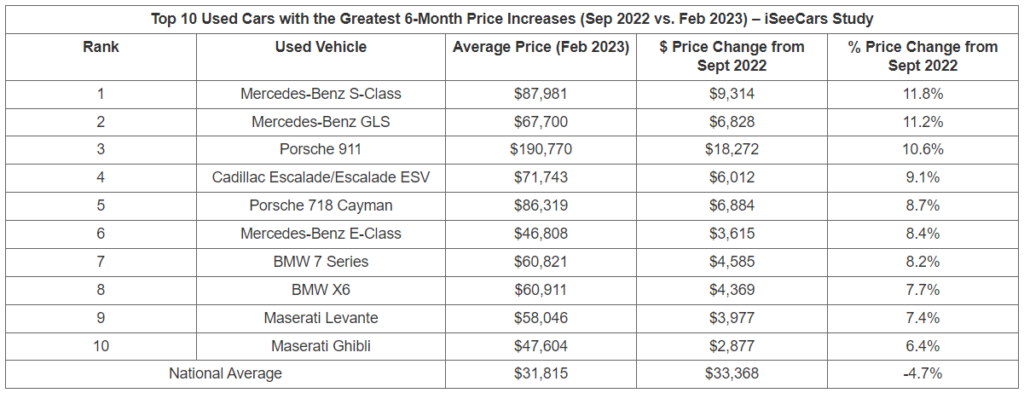
Despite the overall downward trend in used car prices in 2023, some models have experienced price increases over the past six and 12 months. Luxury vehicles, in particular, have seen price hikes, indicating that wealthier consumers are still willing to spend over the manufacturer’s suggested retail price (MSRP) to get the vehicle they desire. Fuel-efficient vehicles like electric cars, hybrids, and hatchbacks have also seen price hikes in response to the increase in fuel prices over the past year.

Used hybrid vehicles have fared relatively well in the market, with prices dropping only about 2.1 percent in the past 12 months. The increase in fuel prices between February 2022 and February 2023 has heightened demand for fuel-efficient hybrids. On the other hand, used electric vehicles have seen a 13.9 percent price drop in the past year, which may be attributed to consumer reluctance to pay higher prices for used EVs amidst inflation and rising interest rates.

When examining used car prices by vehicle type, coupes have actually increased in value compared to a year ago, possibly reflecting the strength in the luxury market. Hatchbacks and pickup trucks have seen the smallest price drops, while minivans and SUVs have experienced value losses of around 10 percent over the past year.
As the pandemic subsides and the supply chain improves, new car prices are beginning to fall, albeit still priced above the MSRP. However, the gap between list prices and MSRP is shrinking, and it is expected to continue contracting throughout the year. Dealers may be paying more for used cars at the wholesale level, but retail pricing does not reflect this, suggesting a compression in profit margins on used cars.
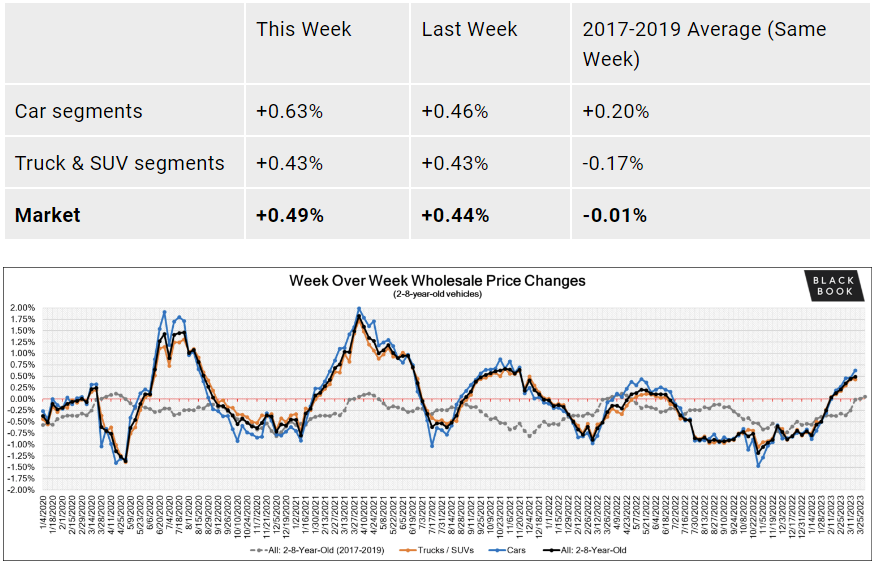
According to recent data from Black Book, the wholesale used car market has been experiencing remarkable growth, with gains far surpassing the typical trends for this time of year. Pre-COVID, some segments would begin to see positive movement, but this year has already witnessed six weeks of consistent increases across most segments.
The overall Car segment grew by 0.63% last week, compared to a 0.46% increase the week prior. Out of the nine Car segments, seven saw growth last week. Sporty Cars, for example, picked up momentum with a 1.17% increase, marking nine consecutive weeks of growth. While the Prestige Luxury Car segment continued to decline, it experienced the lowest single week drop since July 2022.
The volume-weighted, overall Truck segment also increased by 0.43%, mirroring the increase from the previous week. Among the thirteen Truck segments, eleven reported growth last week. The Compact Crossover segment led the way with a 0.92% gain, marking the third consecutive week it held the top spot among Truck segments. Despite these increases, Compact and Full-Size Vans continued to experience a decline.
CarEdge is committed to helping you navigate today’s changing auto market. By understanding the shifts in used car prices in 2023, we hope to empower you to make the best possible car buying decision for your needs and budget. For more information on how we can help you save more today, check out our car buying help options below.
What do you think? Will car prices continue on this trajectory, or is another sudden shift around the corner?

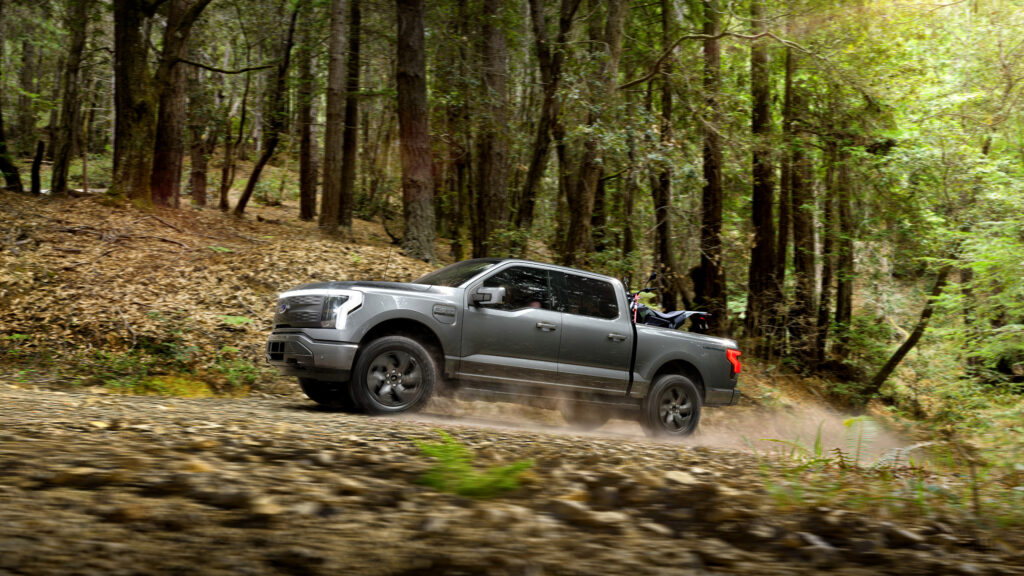
In the ever-evolving world of automobiles, car manufacturers compete fiercely to offer the most innovative and appealing models to customers. When it comes to sales figures, there are always clear winners that outshine the rest. In this article, we’ll take a look at the top five best-selling cars, SUVs, and trucks in the United States in 2022 and 2023.
Before we dive into the sales leaders in each vehicle segment, let’s take a look at the top-selling models in 2022 across all vehicle classes.
1. Ford F-Series – 653,000 sold
2. Chevrolet Silverado – 521,000 sold
3. Ram Pickup – 468,000 sold
4. Toyota RAV4 – 366,000 sold
5. Toyota Camry – 295,000 sold
The list is little changed from 2021. Chevrolet knocked Ram out of the #2 spot in 2022, and the Camry replaced the Honda CR-V. Here’s how U.S. sales fared for top-selling sedans, SUVs and trucks in 2022.

The Toyota Camry is a popular midsize sedan with a starting MSRP of $26,220. In 2022, it was the best-selling car in America with over 295,000 units sold. The Camry is known for its reliability, comfort, and fuel efficiency, making it a great option for those looking for a practical and affordable sedan.
See Toyota Camry listings in your area with local market insights.

The Toyota Corolla is a reliable and affordable compact sedan with a starting MSRP of $21,550. In 2022, it was the third best-selling car in America with over 222,000 units sold. The Corolla is known for its comfortable ride, fuel efficiency, and advanced safety features, making it a great option for those looking for a reliable and safe sedan.
See Toyota Corolla listings in your area with local market insights.

The Honda Accord is a spacious and comfortable midsize sedan with a starting MSRP of $27,295. In 2022, it was the fourth best-selling car in America with over 154,000 units sold. The Accord is known for its comfortable ride, fuel efficiency, and advanced safety features, making it a great option for those looking for a practical and spacious sedan.
See Honda Accord listings in your area with local market insights.
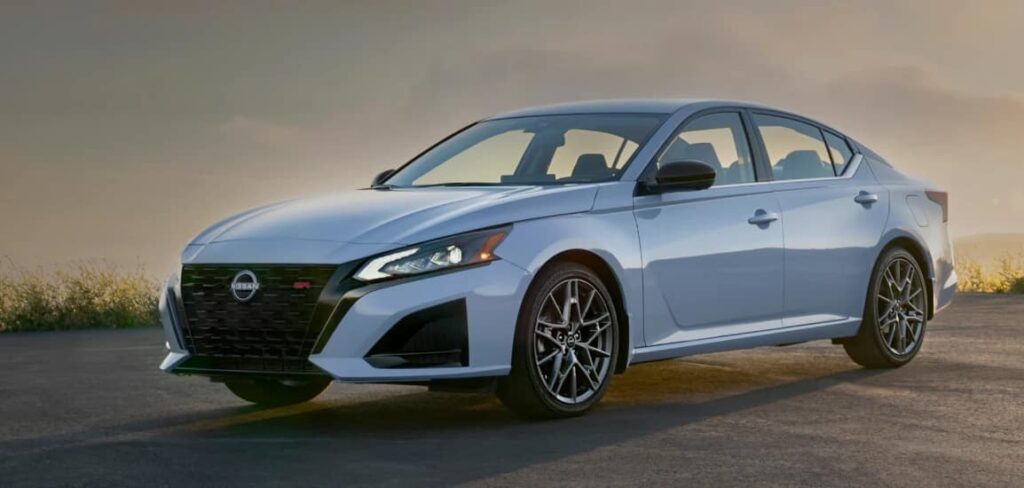
The Nissan Altima is a stylish midsize sedan with a starting MSRP of $25,490. In 2022, it was the fifth best-selling car in America with over 140,000 units sold. The Altima is known for its spacious cabin, comfortable ride, and advanced safety features, making it a great option for those looking for a stylish and practical sedan.
See Nissan Altima listings in your area with local market insights.

The 2023 Honda Civic is another popular compact sedan with a starting MSRP of $25,050. In 2022, it was the second best-selling car in America with over 134,000 units sold. The Civic is known for its sporty handling, comfortable ride, and fuel efficiency, making it a great option for those looking for a fun-to-drive and practical sedan.
See Honda Civic listings in your area with local market insights.
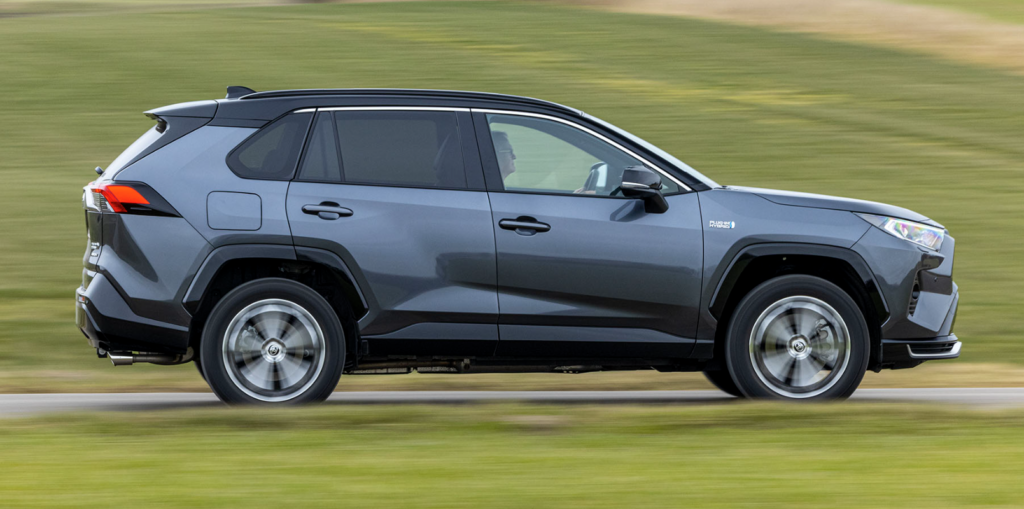
The Toyota RAV4 is a popular compact SUV with a starting MSRP of $27,975. In 2022, it was the best-selling SUV in America with over 366,000 units sold. The RAV4 is known for its reliability, spacious cabin, and advanced safety features, making it a great option for those looking for a practical and versatile SUV.
See Toyota RAV4 listings in your area with local market insights.

The Honda CR-V is another popular compact SUV with a starting MSRP of $28,410. In 2022, it was the second best-selling SUV in America with over 238,000 units sold. The CR-V is known for its spacious cabin, fuel efficiency, and advanced safety features, making it a great option for those looking for a practical and comfortable SUV. The CR-V Hybrid gets up to 40 miles per gallon, saving thousands of dollars in fuel.
See Honda CR-V listings in your area with local market insights.

If you’re looking for that perfect combination of interior spaciousness and rugged reputation, the Jeep Grand Cherokee is certainly on your short list. In 2022, Stellantis sold 223,000 Jeep Grand Cherokees in the United States. For the 2023 model year, the Grand Cherokee starts at $41,530. A plug-in hybrid version is now on sale, but starts at $61,660. At that price point, just go for an EV.
See Jeep Grand Cherokee listings in your area with local market insights.
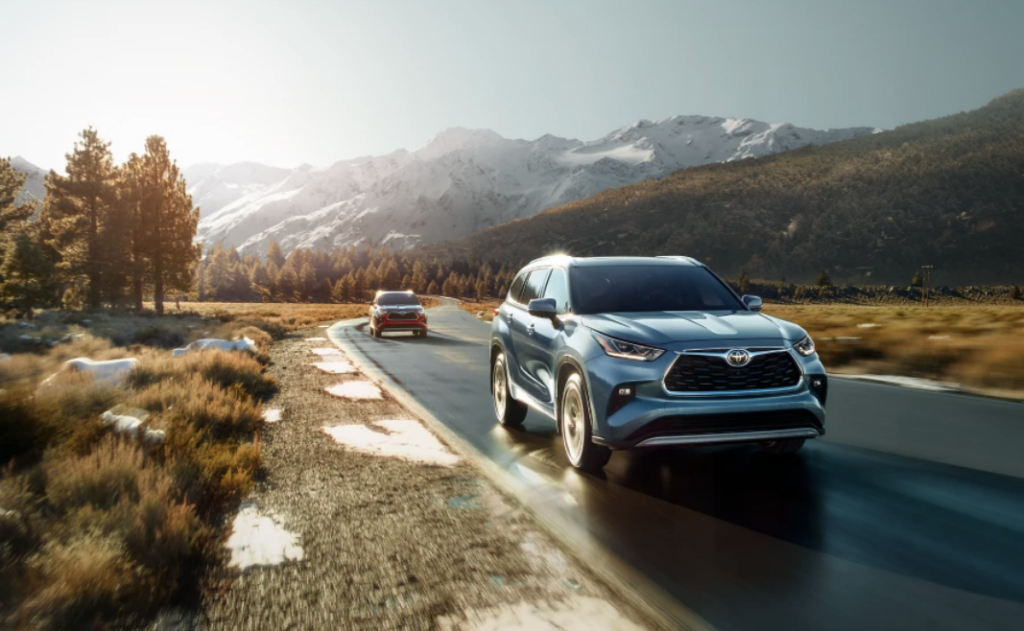
The Toyota Highlander is a spacious and comfortable midsize SUV with a starting MSRP of $36,420. In 2022, it was the fourth best-selling SUV in America with over 222,000 units sold.
See Toyota Highlander listings in your area with local market insights.

The Chevrolet Equinox is a versatile and practical compact SUV with a starting MSRP of $26,600. In 2022, it was the fifth best-selling SUV in America with over 212,000 units sold. The Equinox is known for its spacious cabin, fuel efficiency, and advanced safety features, making it a great option for those looking for a reliable and versatile SUV.
See Chevrolet Equinox listings in your area with local market insights.
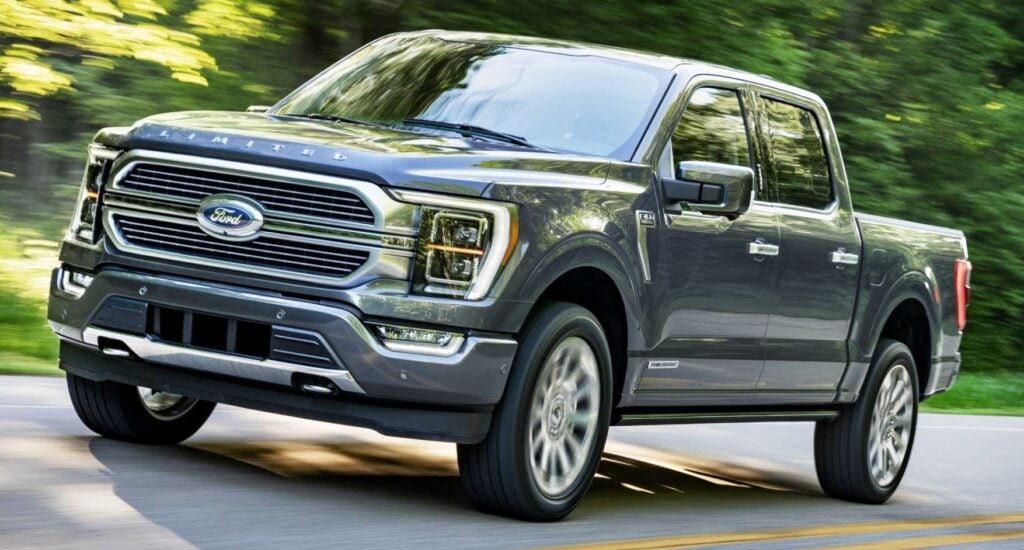
The Ford F-Series is the best-selling vehicle in America, and has been for decades. In 2022, Ford sold 653,000 F-Series trucks, making it the best-selling truck in America. The 2023 model year starts at an MSRP of $33,695. The F-Series is known for its toughness and durability, as well as its powerful engines and high towing and hauling capacities. It comes with several standard safety features, including forward collision warning, automatic emergency braking, lane departure warning, and blind-spot monitoring.
The F-150 Lightning was the best-selling electric truck in America, with 15,600 sold.
See Ford F-150 listings in your area with local market insights.
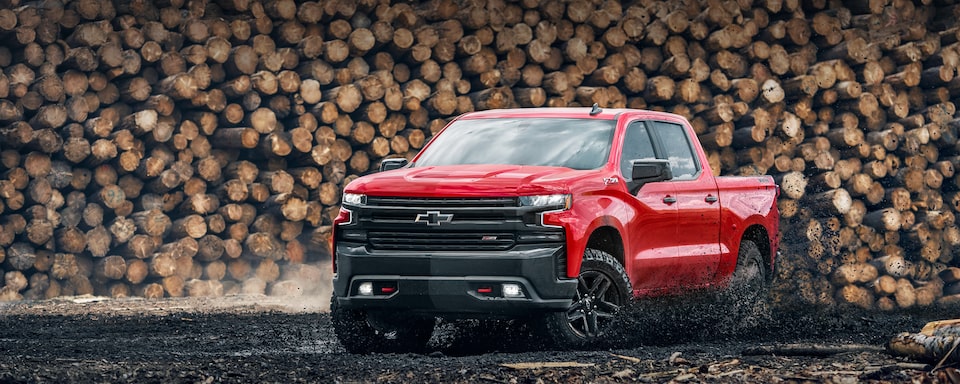
The Chevrolet Silverado is another popular full-size pickup truck, known for its reliability and capability. In 2022, Chevrolet sold 521,000 Silverados, making it the second-best-selling truck in America. The 2023 model year starts at an MSRP of $36,632. The Silverado offers several powerful engine options, as well as a comfortable and spacious interior. It comes with several standard safety features, including forward collision warning, automatic emergency braking, lane departure warning, and blind-spot monitoring.
A fully-electric Silverado is almost here. It will have faster charging and longer range than the F-150 Lightning. Learn more about the Silverado EV.
See Chevrolet Silverado listings in your area with local market insights.
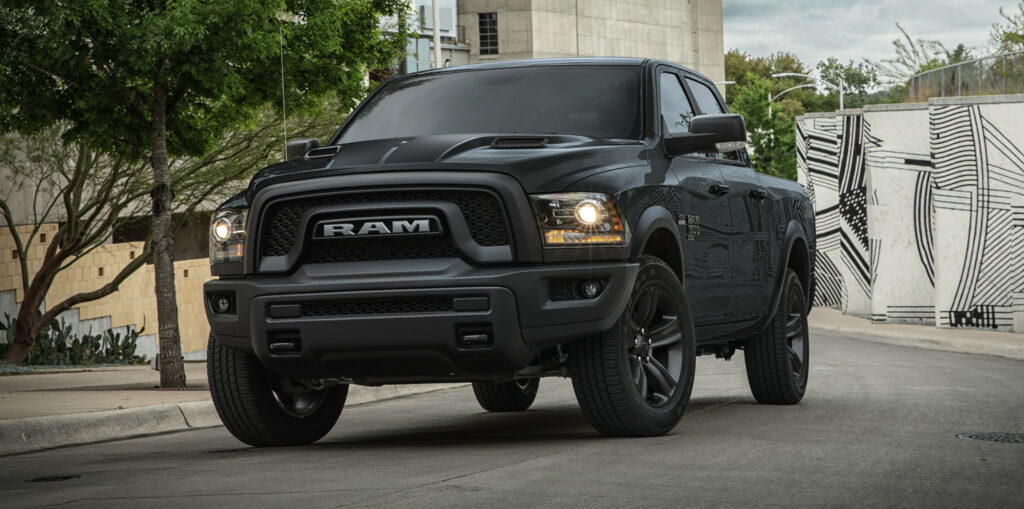
The Ram Pickup is a highly capable full-size truck that offers impressive towing and hauling capabilities. In 2022, Ram sold 468,000 pickups, making it the third-best-selling truck in America. The 2023 model year Ram 1500 starts at an MSRP of $36,820. The Ram 1500 offers a comfortable and spacious cabin, as well as several powerful engine options. It comes with several standard safety features, including forward collision warning, automatic emergency braking, lane departure warning, and blind-spot monitoring.
A fully-electric Ram truck is on the way, but won’t be here for at least a year.
See Ram 1500 listings in your area with local market insights.

The GMC Sierra is another full-size pickup truck that’s known for its capability and reliability. In 2022, GMC sold 242,000 Sierras, making it the fourth-best-selling truck in America. The 2023 model year starts at an MSRP of $38,195. The Sierra offers several powerful engine options, as well as a comfortable and upscale interior. It comes with several standard safety features, including forward collision warning, automatic emergency braking, lane departure warning, and blind-spot monitoring.
The electric GMC Sierra will debut as a pricey Denali Edition 1 in 2024.
See GMC Sierra listings in your area with local market insights.
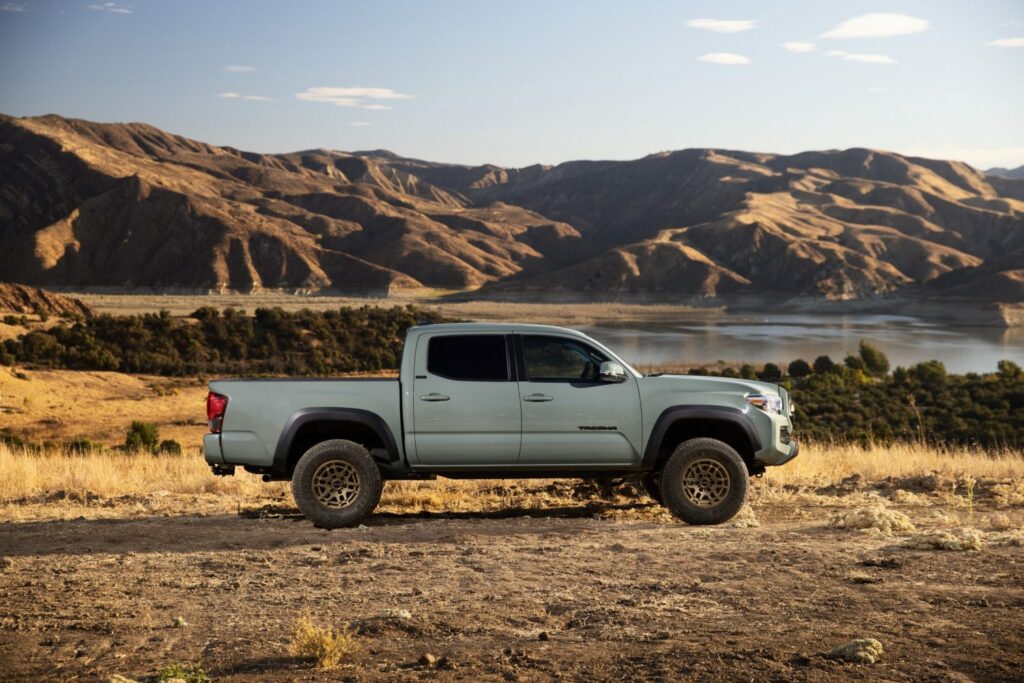
The Toyota Tacoma is a midsize pickup truck that’s known for its durability and off-road capability. In 2022, Toyota sold 237,000 Tacomas, making it the fifth-best-selling truck in America. The 2023 model year starts at an MSRP of $27,750. The Tacoma offers several powerful engine options, as well as a rugged exterior design and a comfortable, feature-rich interior. Despite the growing competition in the midsize truck segment, the 2023 Tacoma continues to be a top choice among buyers, thanks to its proven reliability, impressive resale value, and Toyota’s commitment to enhancing the driving experience.
See Toyota Tacoma listings in your area with local market insights.
The automobile industry is constantly changing, with new technology and design elements making their way into the market every year. However, as we’ve seen, some models have a timeless appeal that keeps them at the top of the sales charts year after year. Whether you’re in the market for a new car, SUV, truck, or luxury model, these best-sellers are definitely worth considering for their reliability, performance, and popularity.

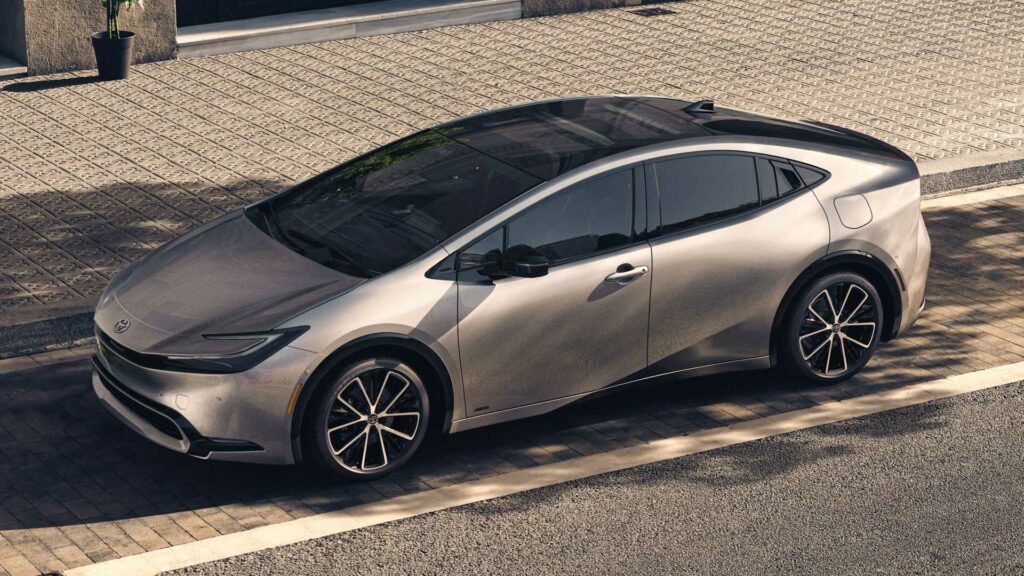
When it comes to fuel efficiency and eco-friendly vehicles, Toyota has been a pioneer in the automotive industry. With the introduction of the iconic Prius in 1997, Toyota has continued to innovate and expand its lineup of hybrid vehicles. However, in the emerging electric vehicle market, Toyota’s offerings seem to be lagging behind their competitors. We’ll explore why Toyota hybrids are a better choice for consumers than Toyota electric cars, and provide insights into their most popular hybrid models.
I’m an EV owner myself. My 2022 Hyundai IONIQ 5 is the best vehicle I’ve ever owned. But that doesn’t mean that all electric models are equally packed with value, efficiency and exhilaration. There are vast differences in range, efficiency, charging capabilities and standard features among EVs on sale in 2023. In many cases, these differences can make or break the value proposition for an electric car. Consider the following:
If you answered no to any of these questions, a traditional hybrid or even plug-in hybrid powertrain is probably better suited for your lifestyle than Toyota’s new electric model. Before we throw praise at Toyota’s accomplishments on the hybrid front, let’s take a look at their latest darling, the all-electric bZ4X electric crossover.

Price: $42,000 – $52,000
Range: 227 miles – 252 miles
Availability: On sale now (see listings in your area with local market data)
Toyota’s first fully-electric model looks better than it performs. Engineered in partnership with Subaru, the 2023 Toyota bZ4X features a comfortable ride, modern looks, but also some notable drawbacks that potential buyers should consider. Here are some of the flaws that will be deal-breakers for some:
Slow charging: One key limitation of the bZ4X is its frankly miserable charging speeds. This means significantly longer wait times at charging stations and is likely to be inconvenient for those who frequently embark on long trips or have limited access to charging infrastructure. Tests by MotorTrend found that the bZ4X’s greatest flaw is charging. Take a look at MotorTrend’s real-world experiment:
Even worse, Toyota admitted in a disclaimer that DC charging may not work when below 32 degrees Fahrenheit. It wasn’t just MotorTrend, others have found similar results.
Range Lacks: In the city, the bZ4X’s EPA-rated range of 227 miles with AWD and up to 252 miles with FWD is just a hair below average. But when you combine average range with below average charging speeds, that’s where we run into problems. Consider that on the interstate at 70 mph, the bZ4X can make it about 190-200 miles on a charge. That’s not too bad, but when you realize that you’ll be stopping for an entire hour to charge every 180 miles or so, it doesn’t sound like a pleasant ownership experience.
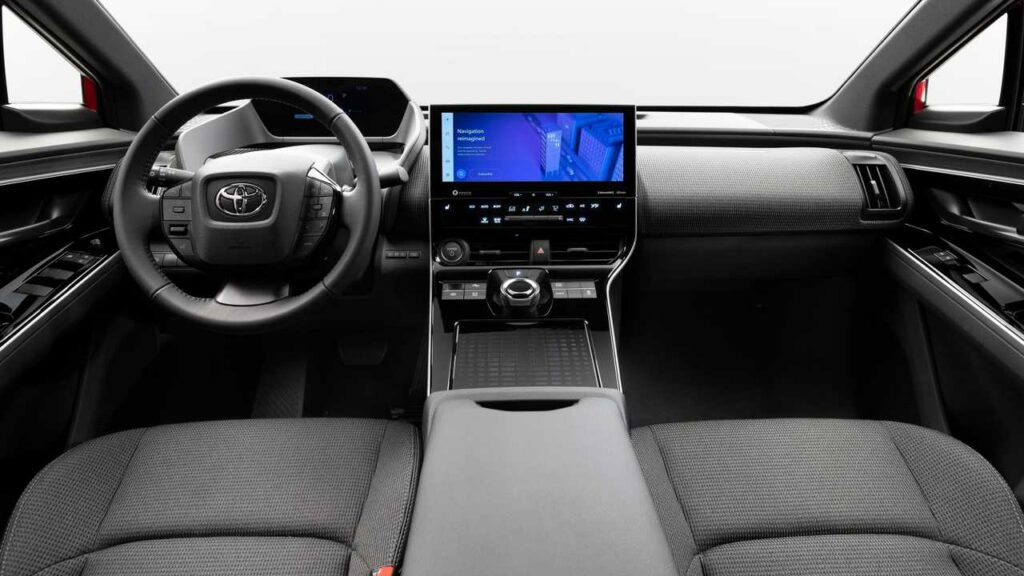
If you don’t plan to take your $45,000+ bZ4X on any road trips, perhaps this is of little importance to you. However, keep in mind that the bZ4X’s reputation as a slow-charger will impact its resale value.
We’re not here to bash on Toyota. In fact, we are big fans of their proven powertrain technologies. Toyota’s hybrid technology has a decades-long track record of reliability and fuel efficiency. The automaker has been perfecting its hybrid powertrain for more than two decades, which means that when you choose a Toyota hybrid, you’re investing in a vehicle with a well-established and reliable system. Toyota’s Hybrid Synergy Drive combines a gasoline engine with one or more electric motors to deliver a seamless driving experience while maximizing fuel efficiency.
Toyota hybrids are well-known for their impressive fuel efficiency. Models like the Prius, Camry Hybrid, and RAV4 Hybrid offer outstanding fuel economy, which translates into cost savings for consumers for a lower upfront cost than an EV. It’s not just about the Prius, either. The Highlander Hybrid is one of the only three-row SUVs equipped with a hybrid powertrain.
Toyota has come a long way since the launch of the Prius over 20 years ago. Not only do today’s hybrid models look a lot better, they’re more spacious AND more efficient. That’s not easy to do.
For instance, the 2003 Toyota Prius was rated for 41 miles per gallon combined. The all-new 2023 Toyota Prius gets 57 miles per gallon, and doesn’t look like a lunch box.
While electric cars are more energy-efficient overall, the higher cost, limited range and charging infrastructure make them less practical for some drivers. Toyota hybrids, on the other hand, provide the perfect balance between fuel efficiency and practicality.
Toyota hybrids are generally more affordable than their electric counterparts. While EV prices have been decreasing over the past months following Tesla’s massive price cut, they still tend to be more expensive than comparable hybrid models. Additionally, the cost of ownership for a hybrid vehicle is often lower than that of an electric car, considering factors such as maintenance, charging equipment, and electricity costs. Toyota’s hybrid lineup offers excellent value for money, making them a smart choice for budget-conscious consumers.
Back when gas prices peaked at $5/gallon, we took a close look at the financial break-even point for various EV models. Take a look at what we found.
One of the main drawbacks of electric cars is their limited range and dependence on charging infrastructure. While the charging network is continuously expanding, it still can’t match the convenience of gasoline stations. Toyota hybrids, however, eliminate the range anxiety associated with electric vehicles.
Toyota’s all-electric bZ4X is rated for 227 miles on a charge with all-wheel drive, and up to 252 miles with front-wheel drive. The hybrid RAV4 of comparable size is capable of driving 595 miles on a 14.5 gallon tank.
With their gasoline engines and regenerative braking, hybrids offer drivers the flexibility to travel longer distances without worrying about finding a charging station.
Eliminating tailpipe emissions and eventually reducing my family’s carbon footprint was one of the main reasons we went electric. However, the carbon ‘break-even’ point depends on how many miles you drive, and how efficient your EV is. We drive a lot, so even with the significant environmental impact of battery mineral mining considered, we determined that it would take us just two years to reach the carbon break-even point. If you drive less than 15,000 miles a year on average, it will likely take 3 to 5 years of driving to make up for the higher environmental cost of manufacturing an EV.
Your source of electricity also matters, as some power grids are much cleaner than others. But the good news is that once you turn that corner, EVs are better for the planet for the remaining life of the vehicle.
Toyota offers a diverse lineup of hybrid vehicles to cater to various consumer needs. Some popular Toyota hybrid models include:
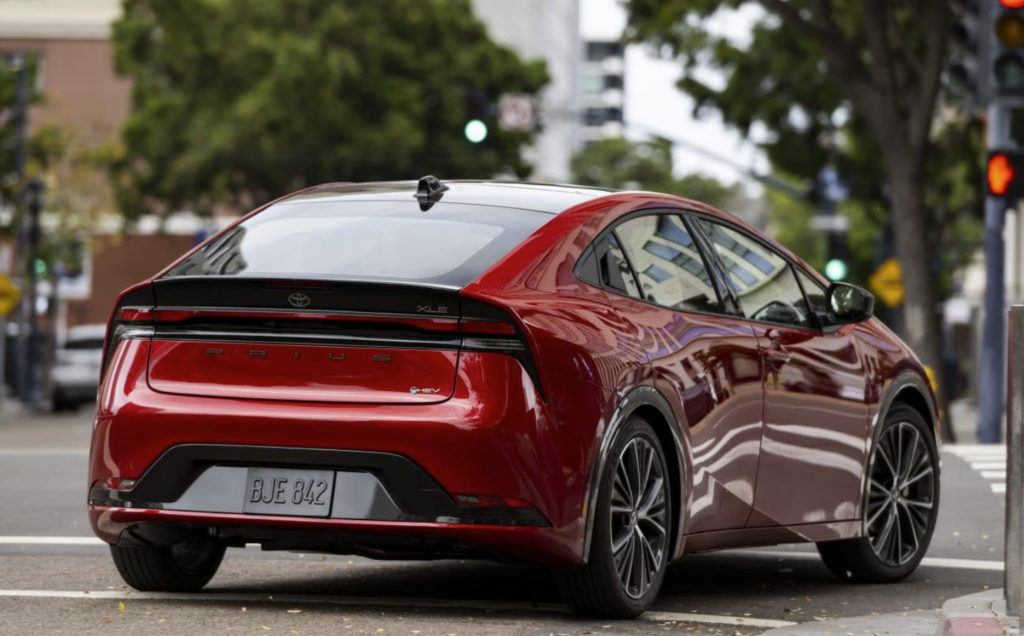
Fuel economy: 57 MPG combined
Starting price: $27,450
The flagship hybrid model, the Prius, is known for its outstanding fuel efficiency, reliability, and practicality. It offers a comfortable ride and a spacious interior, making it an excellent choice for families and commuters.
See Toyota Prius listings near you with local market data.
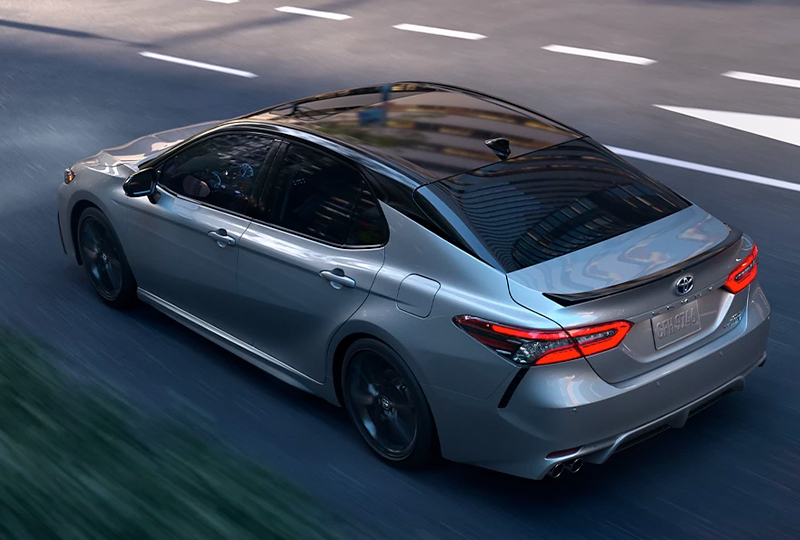
Fuel economy: 52 MPG combined
Starting price: $28,355
Combining the comfort and reliability of the Camry with Toyota’s hybrid technology, the Camry Hybrid delivers an impressive fuel economy and a smooth, powerful driving experience.
See Toyota Camry Hybrid listings near you with local market data.

Fuel economy: 40 MPG combined
Starting price: $30,225
For those who need a more versatile and spacious vehicle, the RAV4 Hybrid offers the benefits of an SUV with the fuel efficiency of a hybrid. The only real downside is that it can be tough to find one on the lot due to the RAV4 Hybrid’s popularity and Toyota’s inventory woes.
See Toyota RAV4 Hybrid listings near you with local market data.

Fuel economy: 36 MPG combined
Starting price: $40,220
The Highlander Hybrid is arguably the best 3-row hybrid on the market. Typically synonymous with gas guzzlers, this family hauler is better for your wallet, and better for the environment.
We recently covered the Highlander Hybrid in-depth here.
See Toyota Highlander listings near you with local market data.
Toyota hybrids continue to stand out as excellent options for consumers seeking fuel efficiency, reliability, and affordability. With their proven hybrid technology, impressive fuel economy, and diverse lineup of models, Toyota hybrids offer an ideal balance between eco-friendliness and practicality. While Toyota’s electric vehicles have yet to catch up with their competitors in the rapidly evolving EV market, the company’s hybrid offerings remain top choices for those looking to reduce their carbon footprint and save on fuel costs.

As the demand for fuel-efficient vehicles continues to rise, hybrid SUVs are becoming increasingly popular. In this article, we’ll be taking a look at the best hybrid SUVs under $50,000 MSRP.
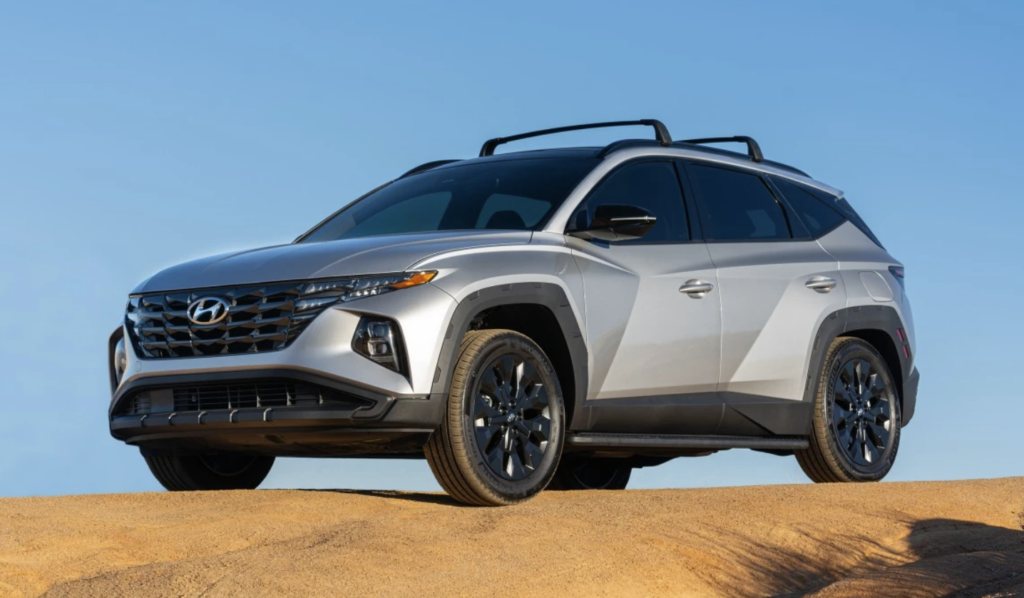
First on the list is the 2024 Hyundai Tucson Hybrid. This car features a sleek re-design with an aggressive new grille and standard LED headlights. Many Tucson Hybrid owners comment on the newfound pep behind a 1.6-liter turbo paired with a 44.2 kilowatt electric motor and refined 6-speed transmission that shifts seamlessly between gears while producing 226 horsepower and 258 lb-ft of torque.
At a combined 38 MPG and a starting price under $30,000, the Tucson is an excellent choice for those looking for an efficient and reasonably priced SUV. Hyundai also offers 3 years of complimentary maintenance, a 10-year/100,000-mile powertrain and hybrid components warranty, as well as a 5-year/60,000-mile bumper-to-bumper warranty.
See new and used Tucson Hybrid listings near you featuring local market data.
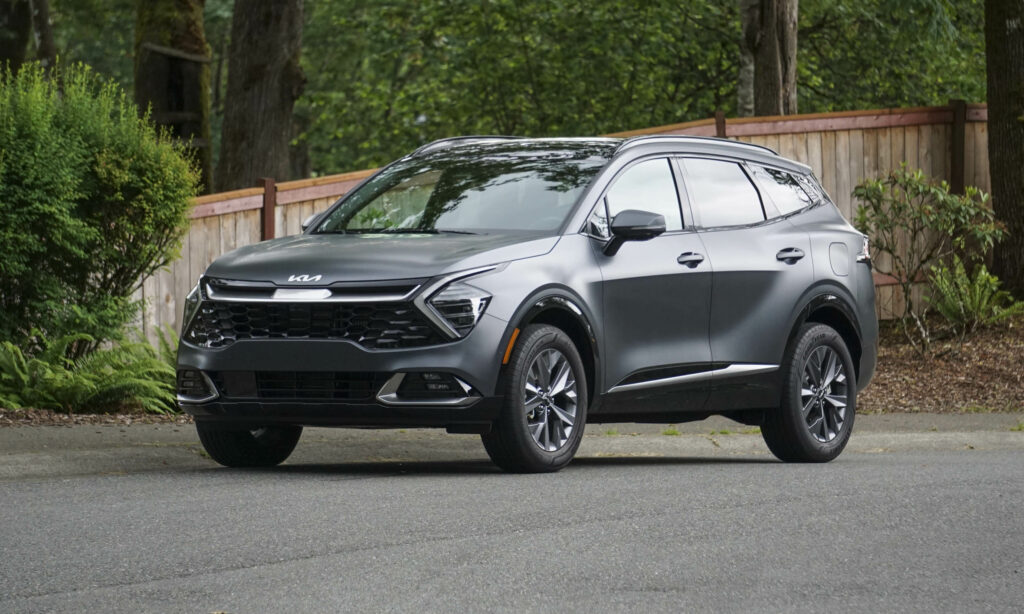
Next on the list is the 2024 Kia Sportage Hybrid, a gem from Hyundai’s sister company. The new Sportage is gaining a lot of hype, with a length 7 inches longer than the previous Sportage model. The 2024 Sportage Hybrid sports best-in-class cargo room and rear legroom. Even more impressive, when equipped with front-wheel drive, the Sportage Hybrid tops out at a combined 43 MPG. Plus, it carries the same great warranty as the Tucson Hybrid.
See new and used Sportage Hybrid listings near you featuring local market data.

The 2024 Toyota RAV4 Hybrid delivers amazing reliability and fuel-efficiency, reaching 43 MPG. That’s no easy feat for anything other than an EV. When Toyota gets something right, they stay with it until it breaks. However, for 2024, the infotainment system has finally been upgraded.
See new and used RAV4 Hybrid listings near you featuring local market data.

The phenomenal 2024 Toyota Highlander is easily the best ride of the group, but it’s also the most expensive, topping out just under $60,000. The Highlander Hybrid is one of the only hybrid SUVs available with third-row seating. The 2024 Toyota loses little if any of the luxurious feel of the gas version of itself and adds a standard digital instrument panel to all models. Higher trim levels now sport an upgraded 12.3-inch touchscreen. The Highlander Hybrid is sufficiently powerful, considering it can produce up to 243 horsepower. Considered the most reliable hybrid SUV on the list, treat yourself to comfort with the 2024 Highlander seating up to 8 people and gaining a combined 36 MPG.
See new and used Highlander Hybrid listings near you featuring local market data.

Finally, the fully redesigned 2024 Honda CR-V Hybrid comes in two different trims: the Sport Hybrid and the Sport Touring Hybrid. The front-wheel drive model matches the Kia Sportage with a best-in-class 43 MPG city. Both are also propelled by a powertrain featuring a 2.0 4-cycle Atkinson engine and an electric motor garnering an output of 204 horsepower. If you like reliability, refreshingly designed interior technology, and a spacious interior, the Honda CR-V is sure to please.
See new and used CR-V Hybrid listings near you featuring local market data.
In conclusion, these 5 hybrid SUVs are the best options for those looking for an affordable, fuel-saving vehicle that doesn’t sacrifice room and comfort. What do you think? Are fully-electric SUVs worth the extra price upfront, or are hybrid SUVs the real value on the market? Let us know in the comments below, or join the conversation at the fastest-growing automotive community online, the CarEdge Community forum.